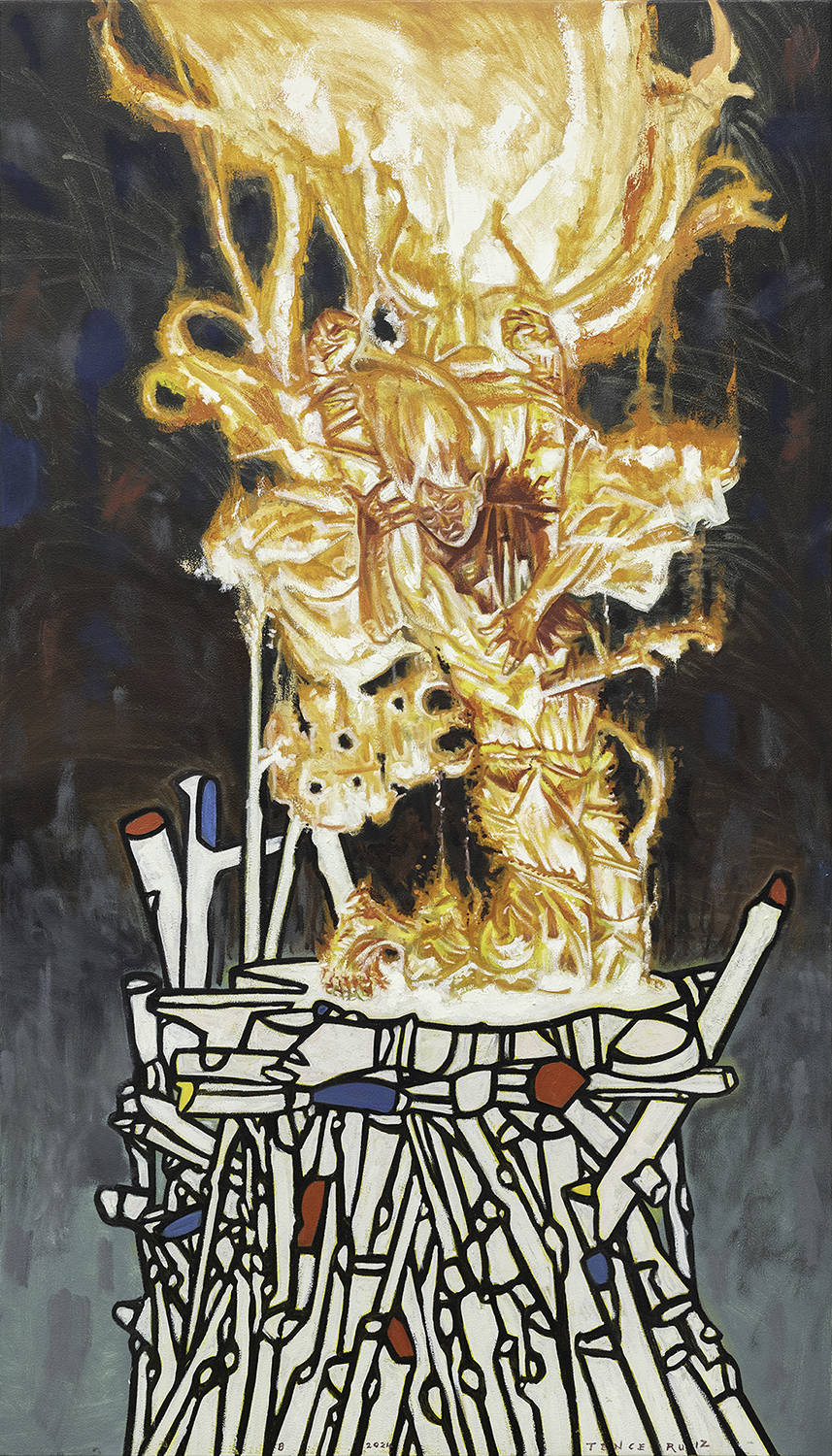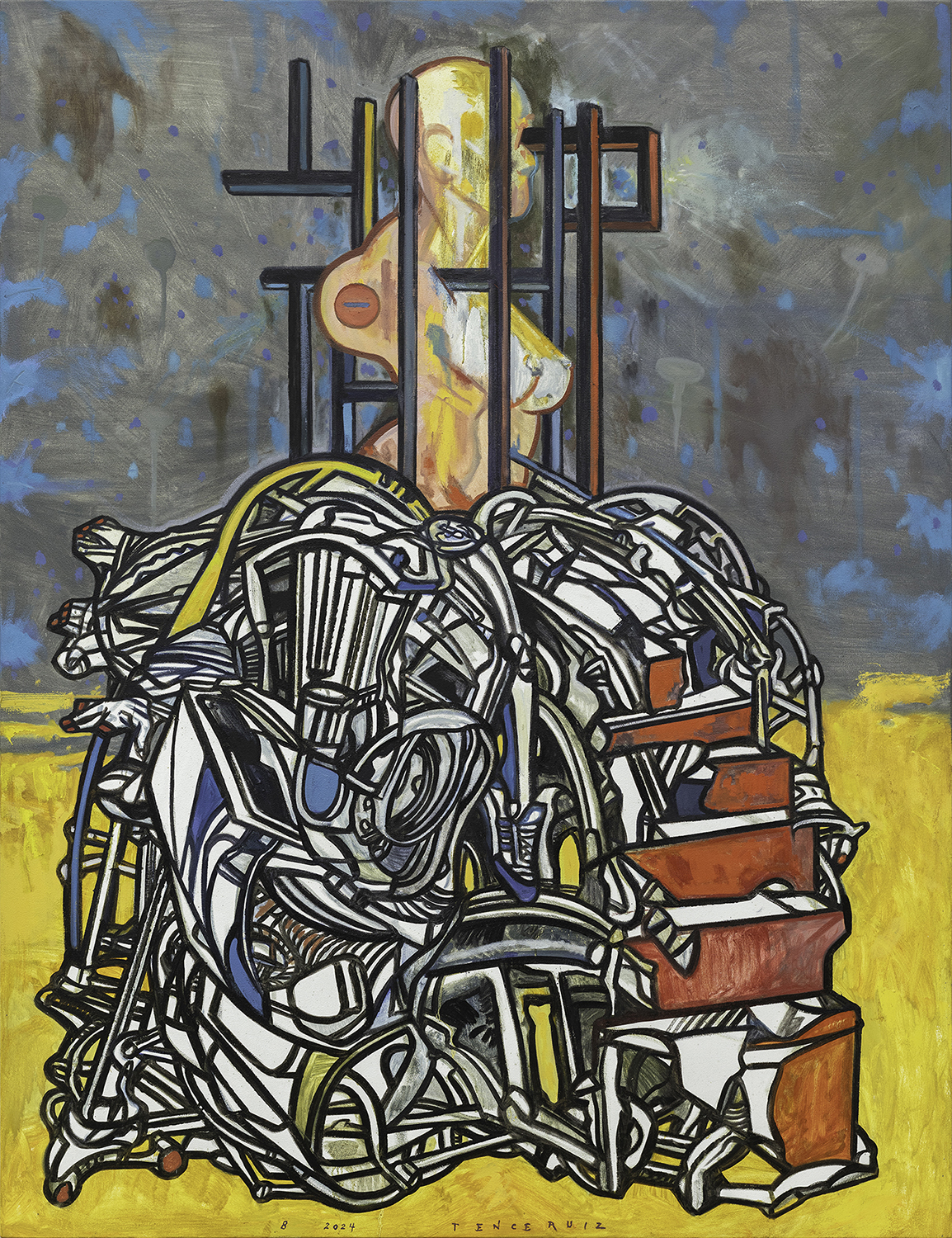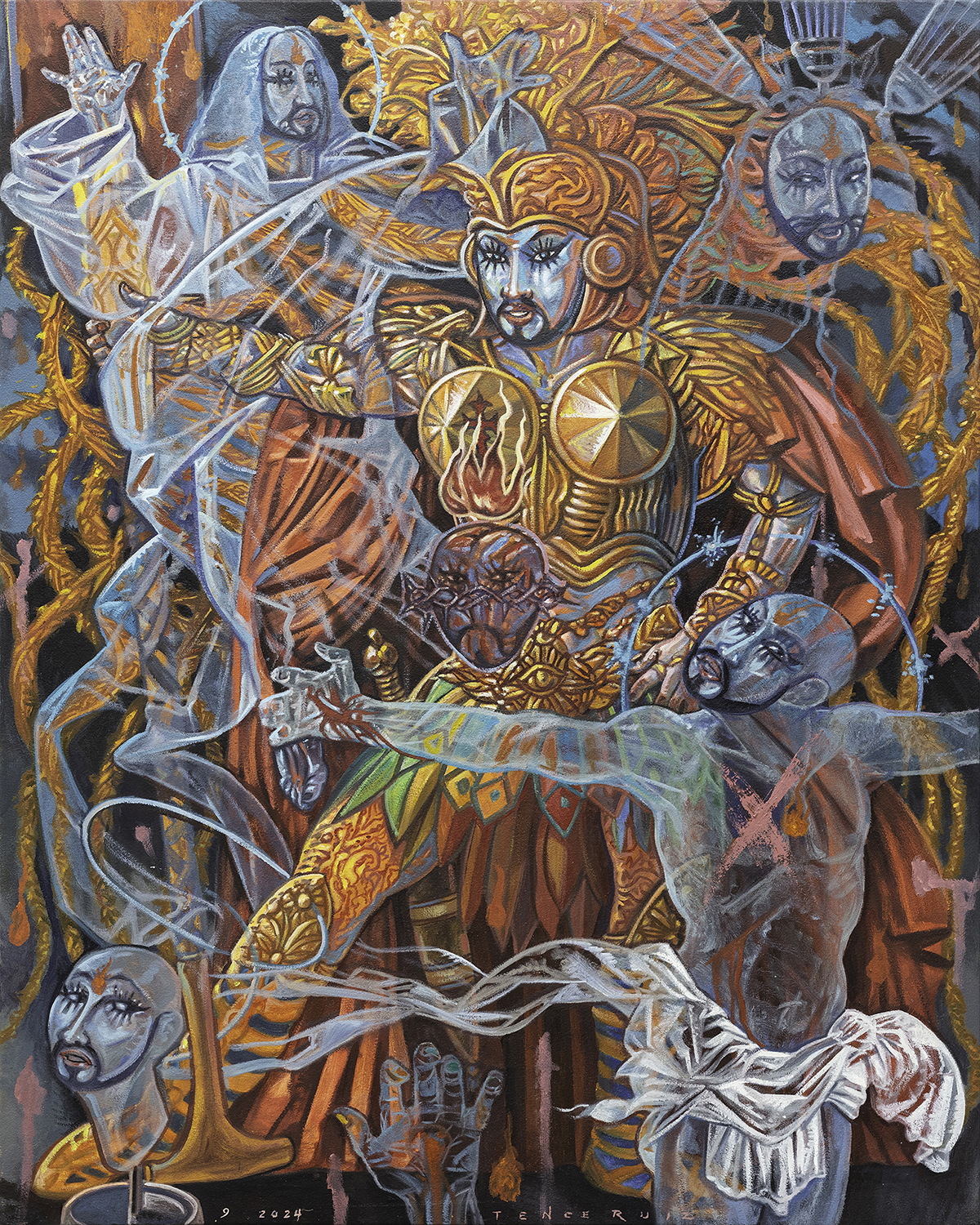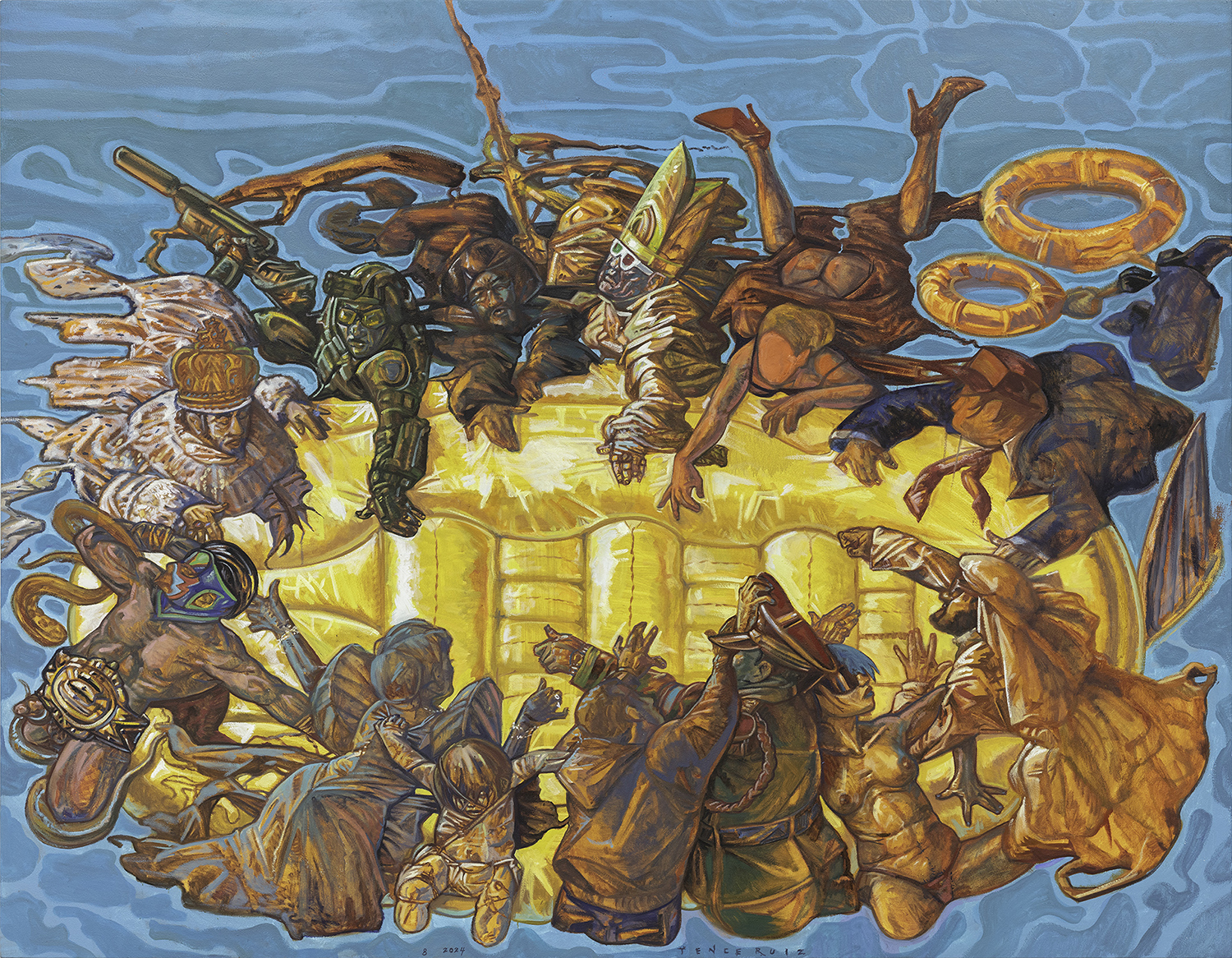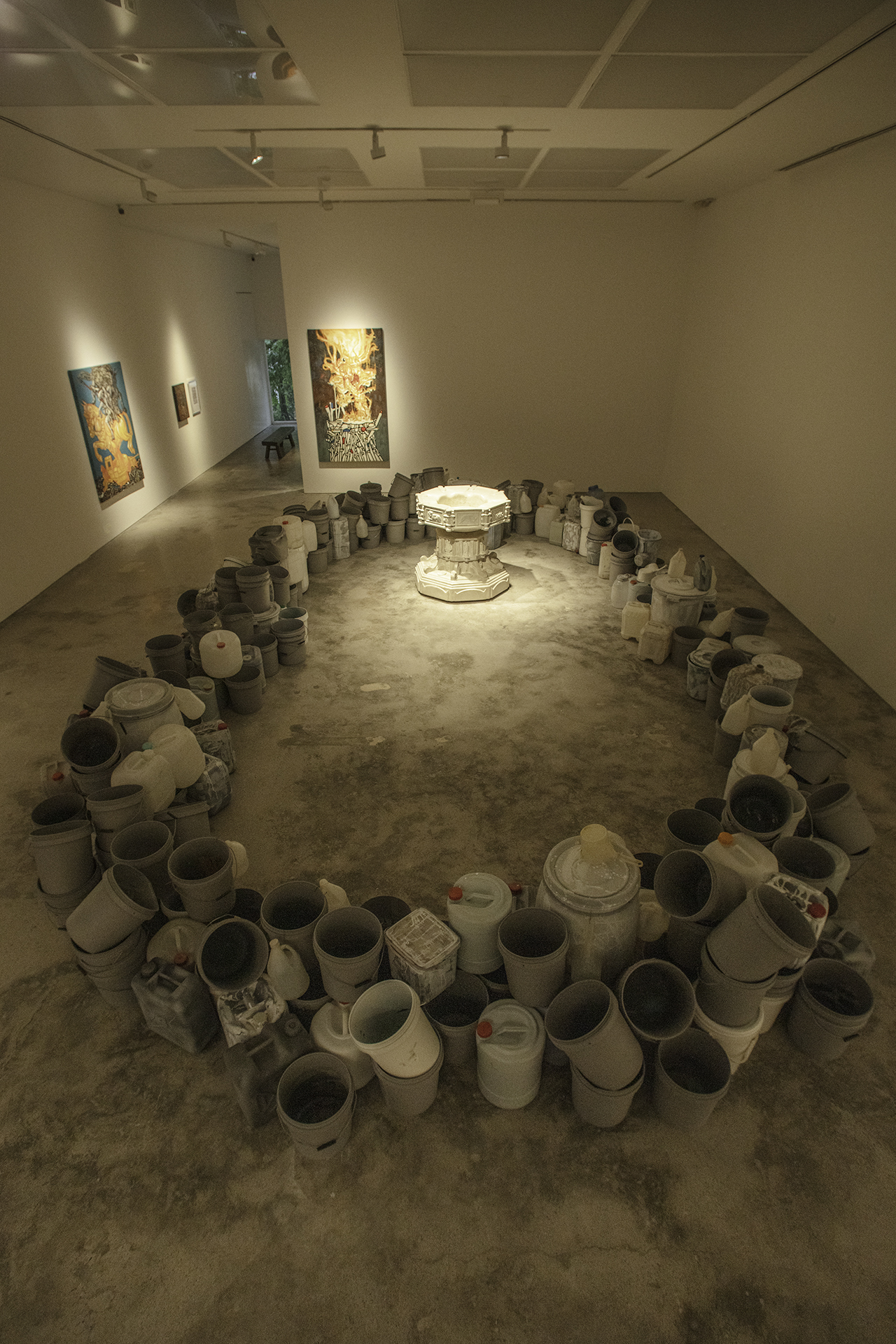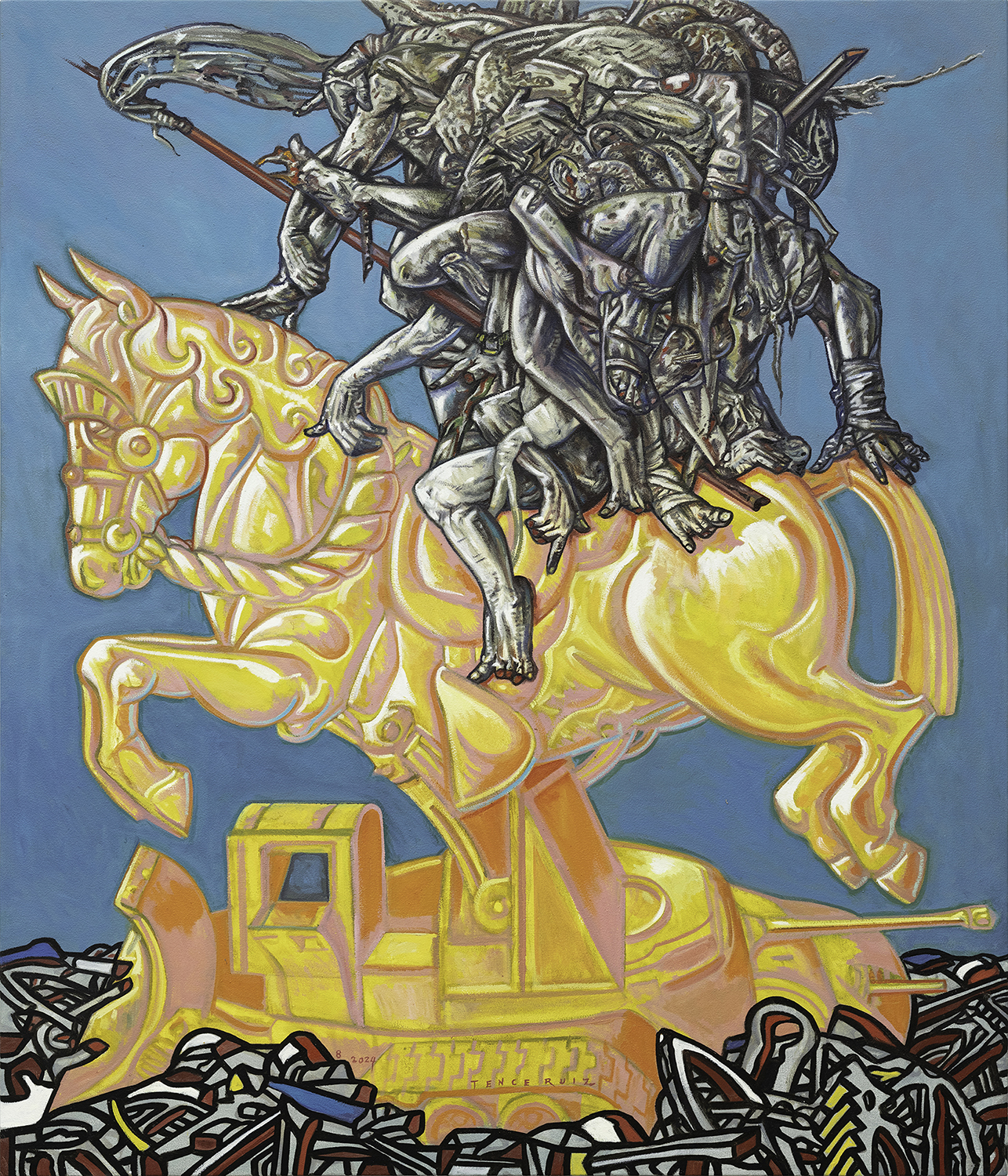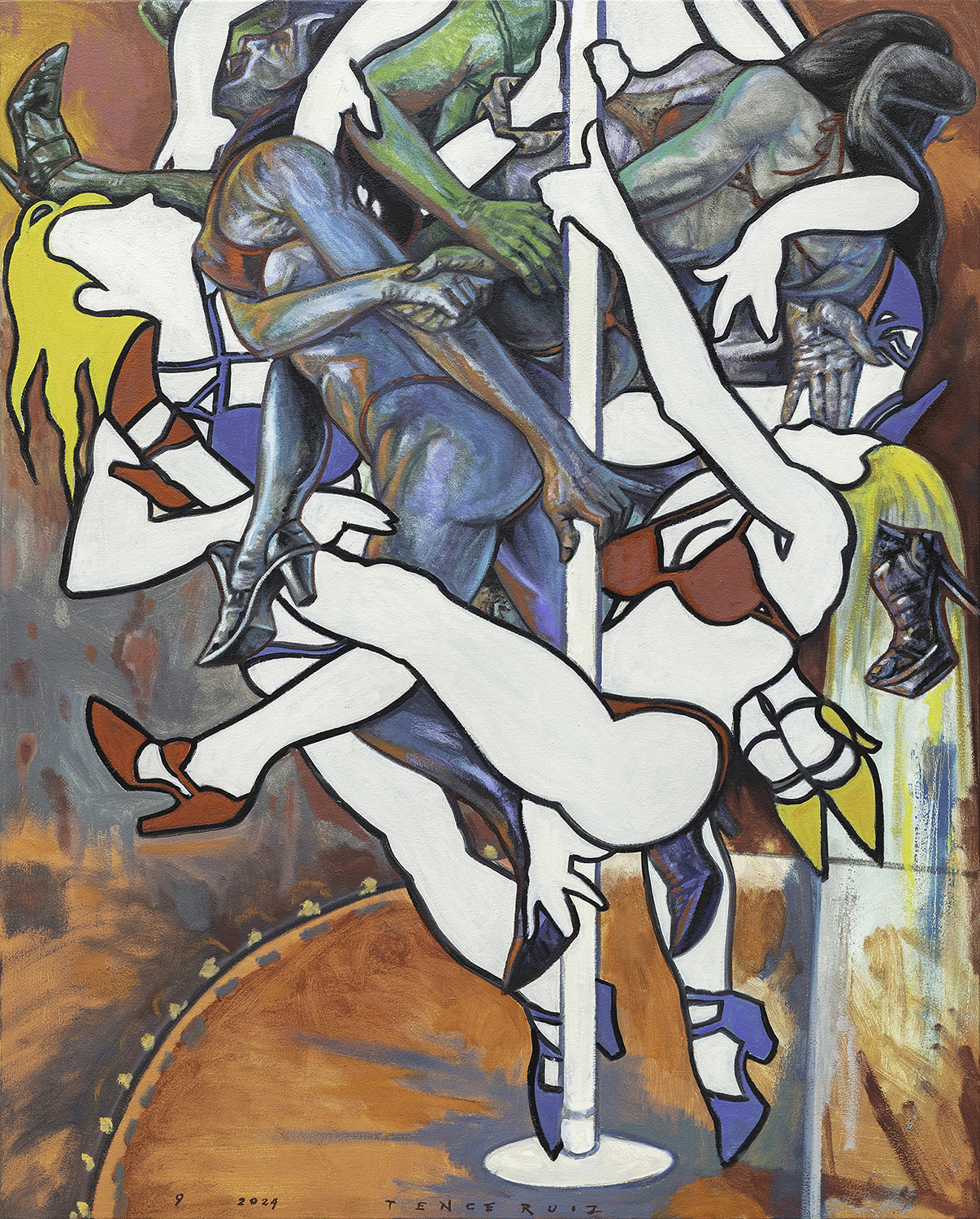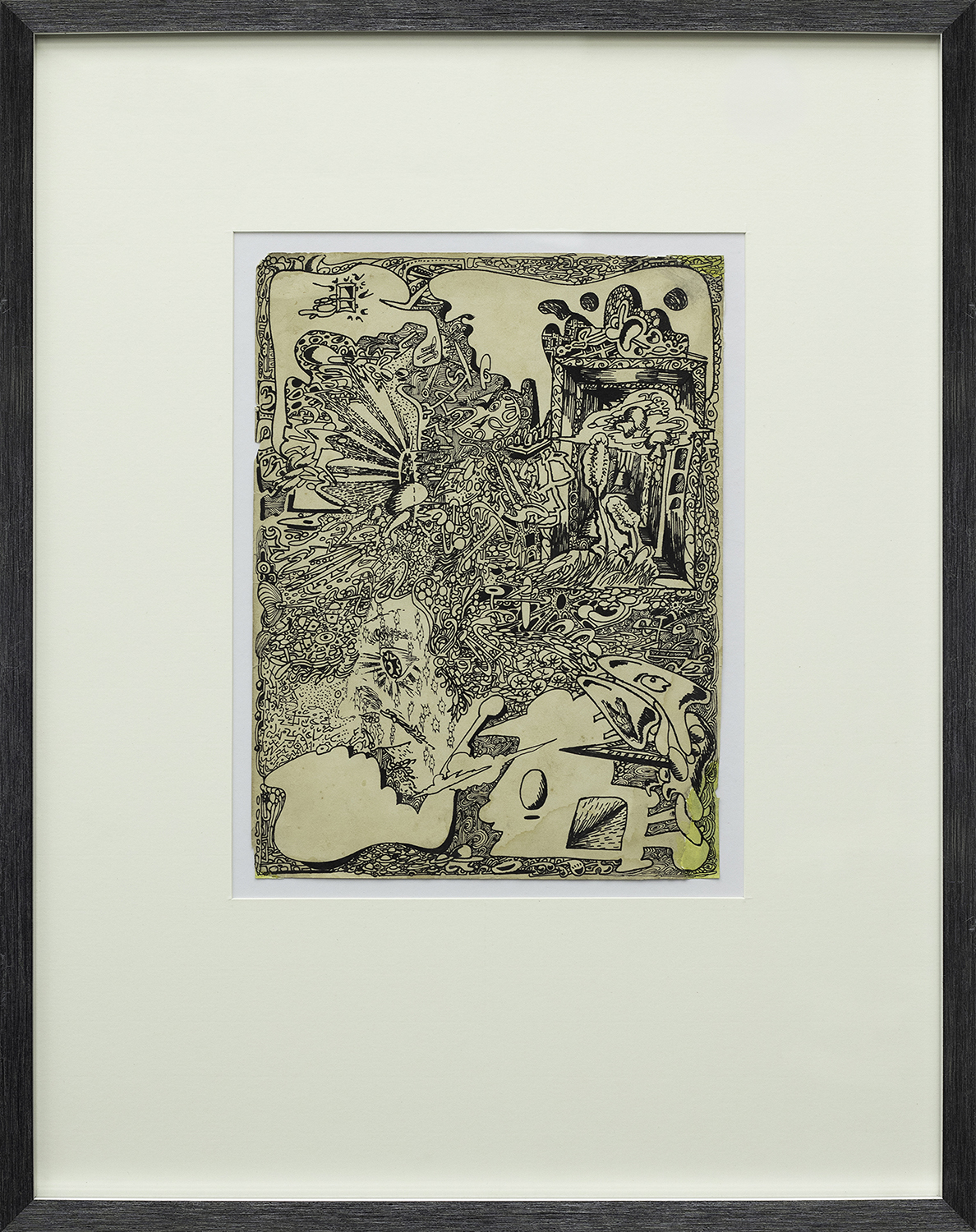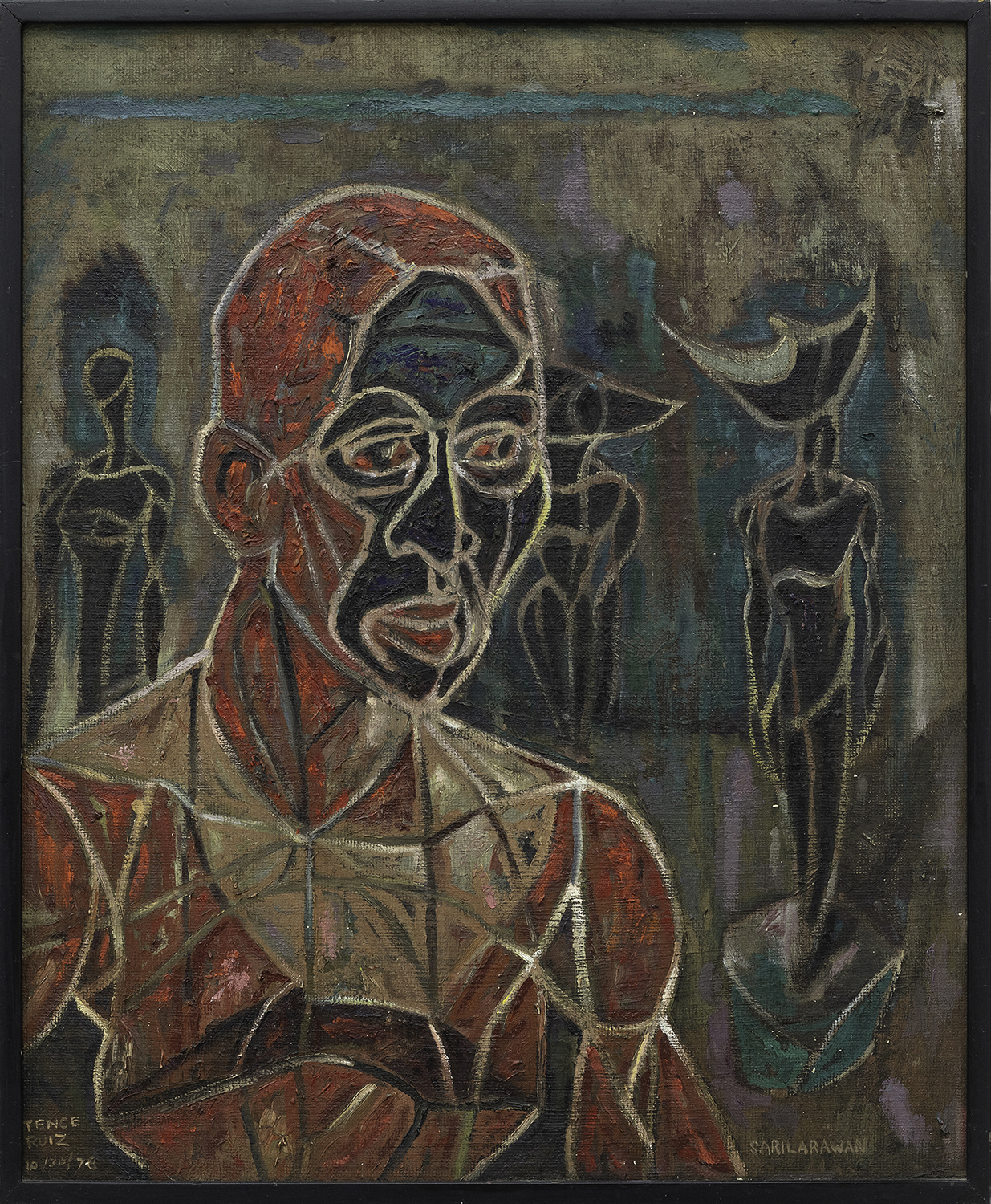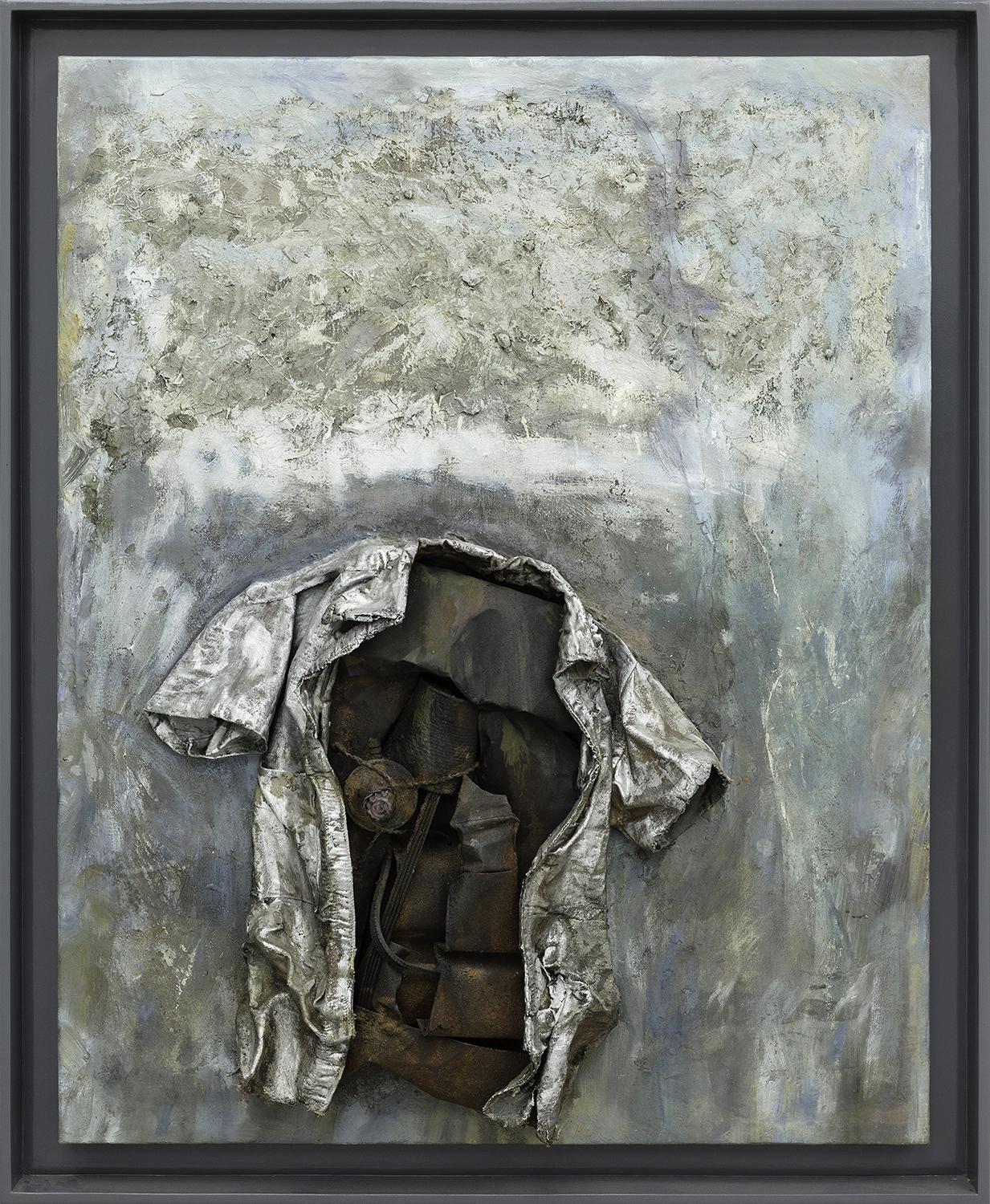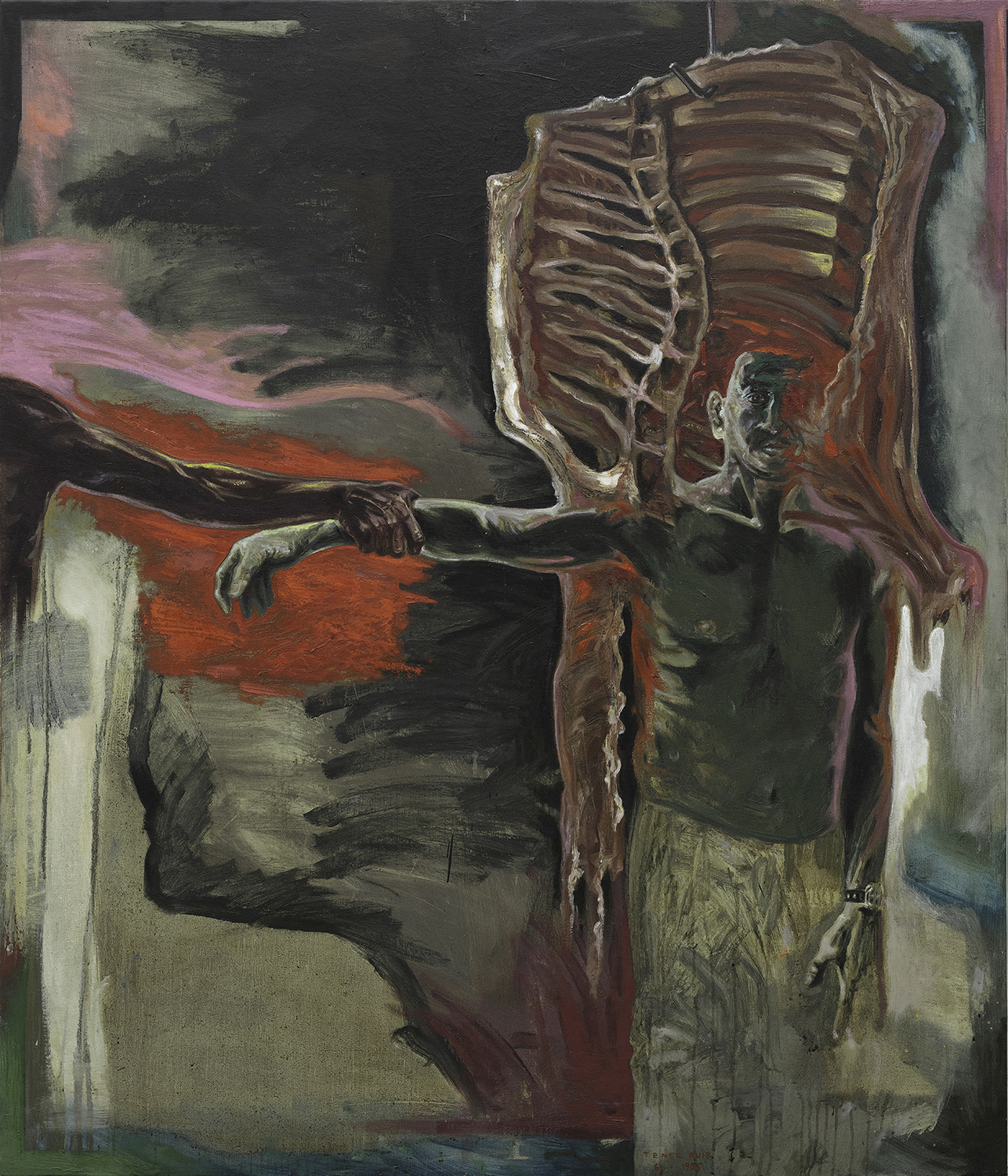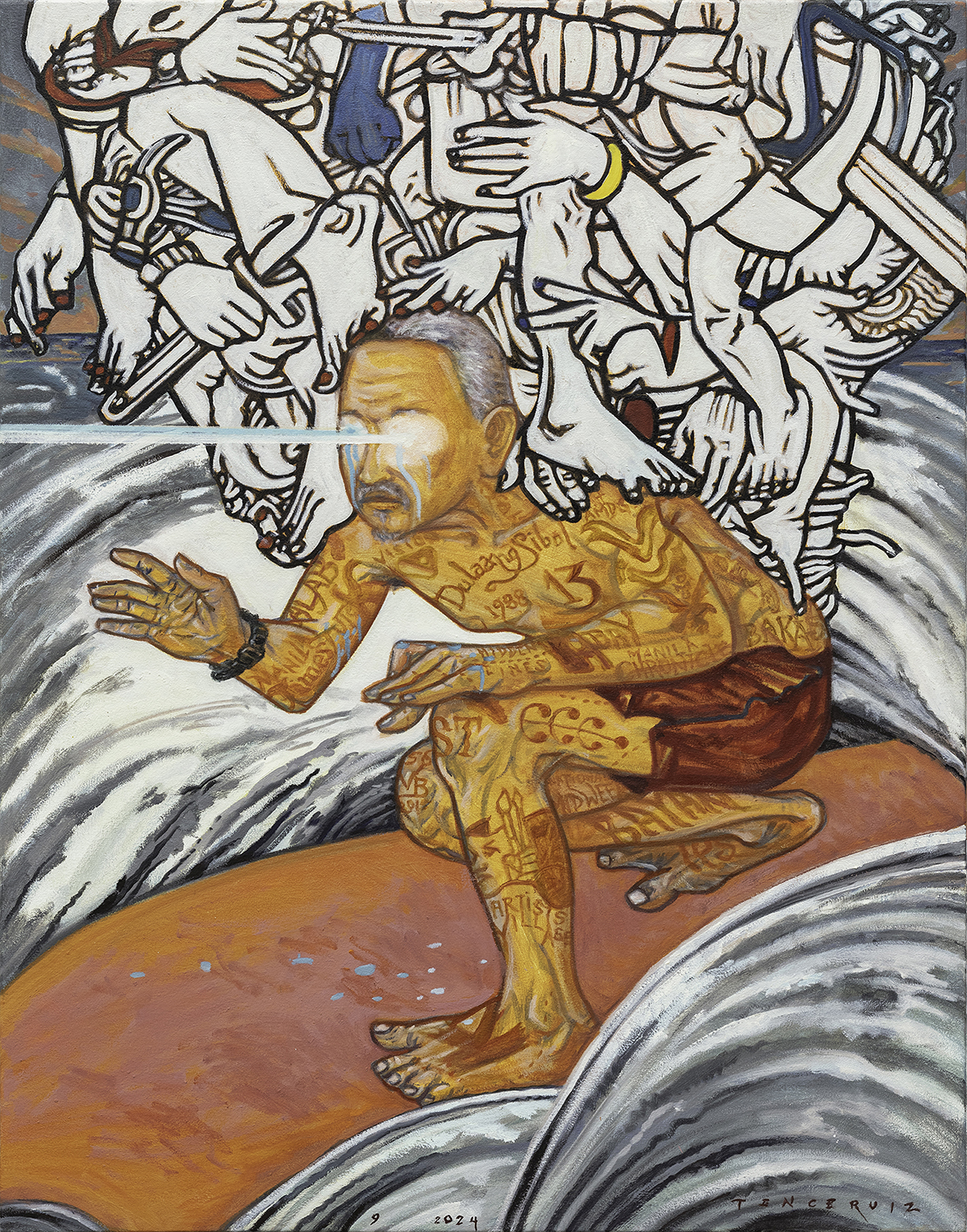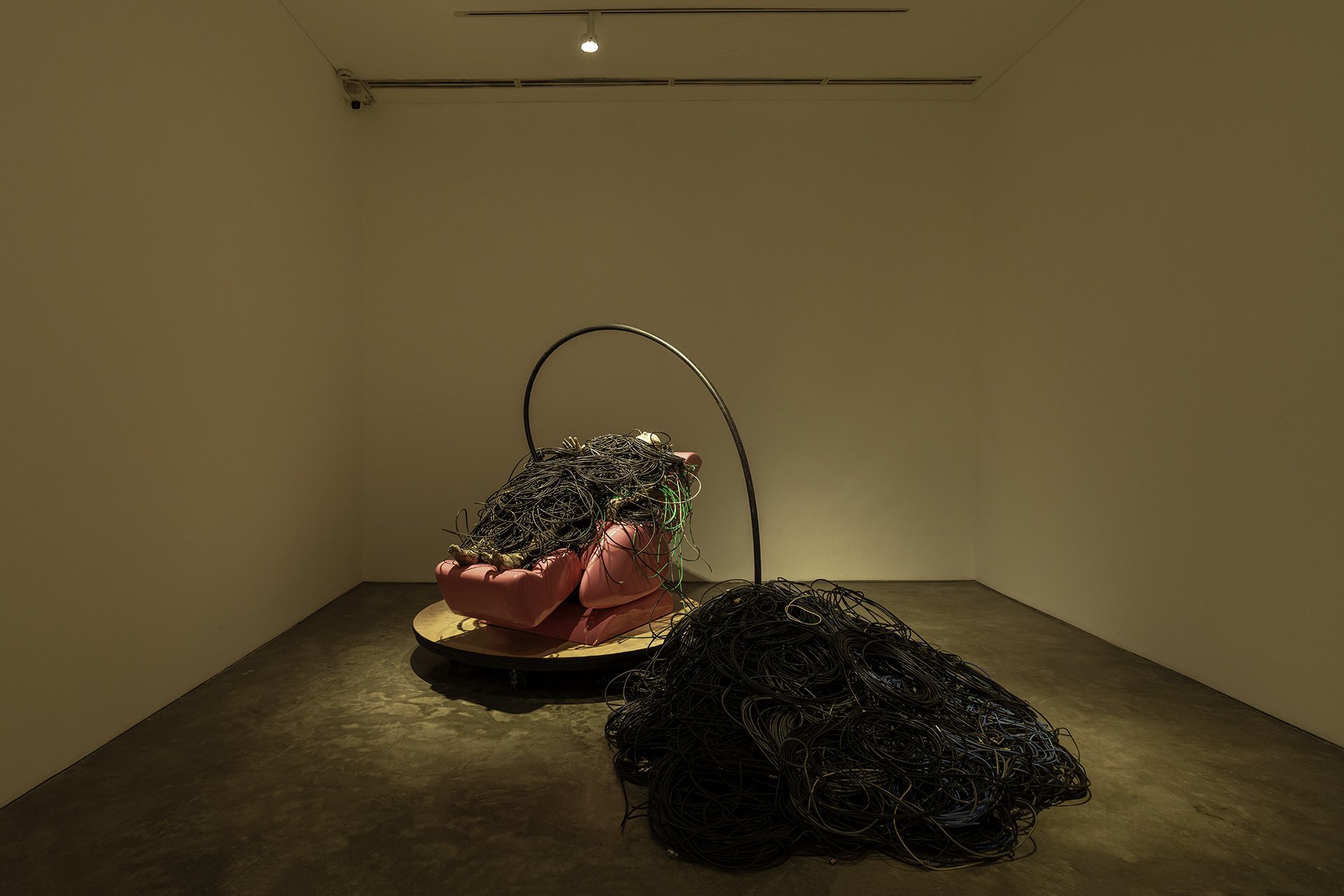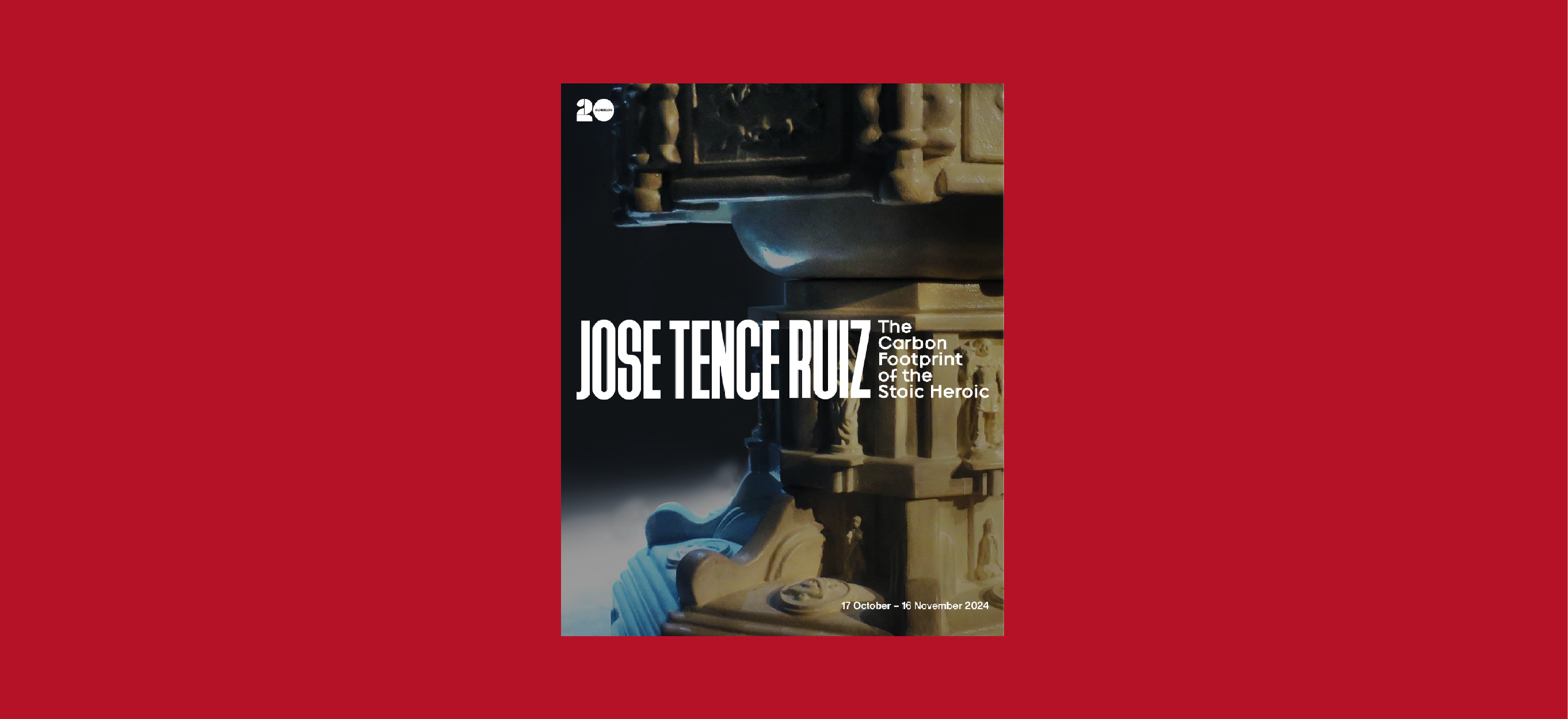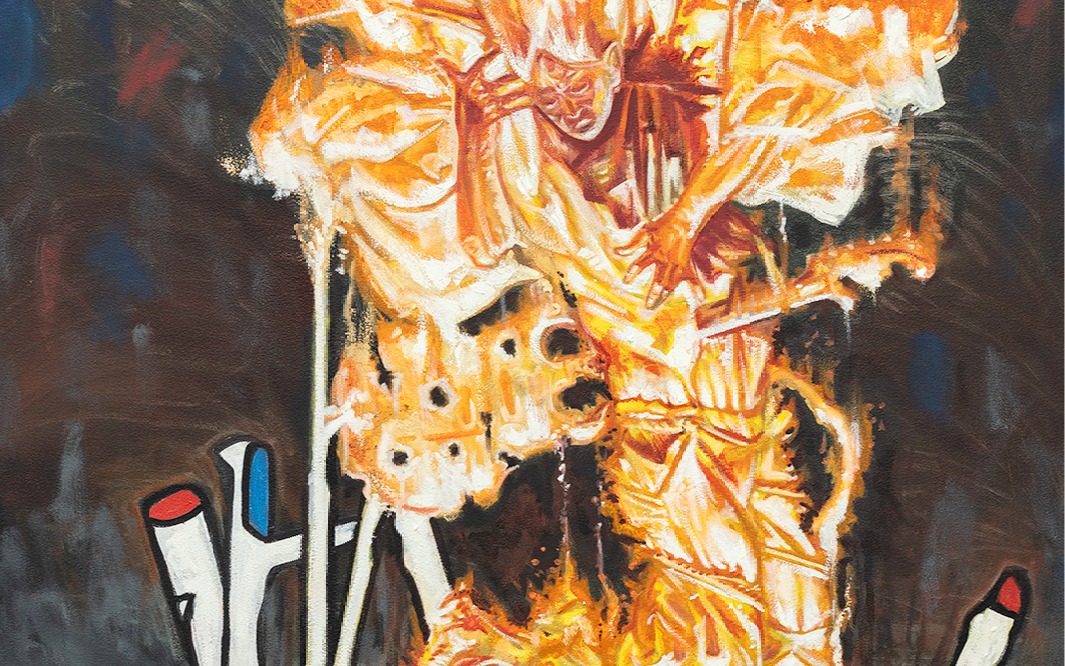
Video
About
The Carbon Footprint of the Stoic Heroic, the latest solo exhibition in Jose Tence Ruiz’s 50-year career, combines the artist’s social, historical, and personal inquiries as he continues to explore past themes, embarks on new questions, and reflects on his place in an increasingly chaotic world. The artist’s new paintings engage with a range of current events that disturb and provoke him–the horrors of genocide, the migrant crisis, the sanctimony of religious conservatives–while a handful of self-portraits in the small gallery invite the viewer to interpret his most personal subject: himself.
Tence Ruiz’s career–one of the most prolific of any Filipino artist, wide-ranging in its variety of both medium and subject–has included large-scale installations (most famous of which is the 2015 work Shoal), oil paintings that constitute the core of his practice, as well as pen and ink drawings that have appeared in the Manila Chronicle, WHO Magazine, and InterPress Asia Pacific. Since the 1980s, when he first emerged as one of the principal members of the social realist movement, his artistic practice has remained faithful to the mandate of SR, producing works that exhort viewers to interrogate our shared socio-political realities in his distinct surrealist style. A self-identified agnostic, Tence Ruiz has described his work as a form of daily prayer, and titled his 2023 monograph Litanya.
Religious imagery saturates the exhibition: the centerpiece of the show, a large installation titled Ang Pila Balde ni Ning, Charie, Charo, Rochit, Rose, Sari, Rosie, Saring, Chayong, atbp., is a baptismal font encircled by hundreds of plastic water containers to evoke a living rosary. The title painting, The Carbon Footprint of the Stoic Heroic, depicts a Catholic penitent burning alive atop a wood pyre, a reflection on martyrs and what each one leaves behind. The “carbon footprint” in the title questions the value of human life at a time when images of dead bodies are circulated online, daring viewers to grow desensitized to genocide. The pyre on which the penitent burns, painted white, red, blue, and yellow and outlined in thick black lines, appropriates and distorts Piet Mondrian’s visual language to symbolize the artist’s disillusionment and the death of utopia. Two paintings, Mondrian’s Denouement: The Vestida of Carcasses and Mondrian’s Denouement: The Hills of Dermis, represent the carnage of Gaza as piles of severed body parts. In the latter, a tank equipped with the blade of a bulldozer flattens the rubble of utopia; in the former, an iteration of Tence Ruiz’s Kotillion series, an amputated torso is impaled by the rigid lines of Mondrian’s squares and rectangles.
Though tragedy permeates Tence Ruiz’s paintings, they often take a comedic turn, as it does in Morion, Miron, Moron, Meron, an oil painting which likens the appearance of the morion (the costumed penitent of the Moriones festival, a lenten celebration in the province of Marinduque) to the artist Pura Luka Vega, who drew the ire of church figures and politicians for dressing as Jesus Christ in a drag performance. In challenging the heteronormativity of a religious figure, Tence Ruiz encourages the viewer to mock the reactionary forces in Philippine society. Pointing out the villains of the past and present lies at the core of the artist’s motivations. Another painting, comically titled My Heart Will GUO On, juxtaposes power and privilege with displacement and dispossession: world leaders fight migrants and refugees for a place on a lifeboat, a stark depiction of class warfare in a time of resource scarcity.
In the small gallery, Tence Ruiz shifts the viewer’s gaze onto himself with self-portraits in various media from different periods of his life. There are two new works depicting the artist in his current condition, ruminating on the bleak state of the world and his place in it. In the mixed-media installation IKeaRUS, a resin model of the artist’s body reclines in a pink massage chair, buried under piles of black cable wires. A meditation on mortality and digital hyperconsumption, the work reflects on the time wasted by the constant flux of information in the digital age, as well as the threat of inertia and obsolescence that accompanies an artist whose success has allowed him a comfortable life. Another self-portrait, titled The Surfer, combines the exhibition’s social and political concerns with the artist’s personal anxieties: a surfer, tattooed with references to Tence Ruiz’s life, rides the waves while carrying on his shoulders the weight of his disillusionment, represented by the amputated arms and legs of Gaza. In the tears that stream down the surfer’s face as lasers shoot out of his eyes, Tence Ruiz has created the most apt visual metaphor for his practice: the lifelong work of grieving the state of the world, confronting it with no illusions, and urging us to confront it with him.
– Isa Rodrigo
Jose Tence Ruiz (b. 1956, Manila; lives and works in Manila, Philippines) took two courses at the UST College of Fine Arts and Architecture, enrolling in BFA Advertising in 1973 and graduating with Honors with a BFA in Painting in 1979. He was Editor-in-Chief of Vision Magazine in 1976. He has since been involved in multi-media visual activities such as Set Design, Publication Design, Book Illustration, Media presentations, Teaching, Editorial Illustration, Painting, Art for Advocacy, Sculpture, Installation and Autonomous Action Art. He is an Araw ng Maynila Awardee for New Media (2003), a Five Time AAP Award Winner (1979 – 2005) and the first Filipino to win the Bratislava Biennial Award for Children’s Book illustration in what was then Czechoslovakia (1982). He has been invited to the Cagnes-Sur-Mer Exhibition in France, (1981) The 2nd Asia-Pacific Triennial for Contemporary Art in Brisbane, Australia, (1996) The Havana Biennial in Cuba (2000), The Kwangju Biennial in Korea (1999) as well as the preparatory commission for the1st Singapore Biennial (2004). His work from the 70s and the 80s was featured in Telah Terbit: Asean Art of the 70s, one of the major exhibitions within the 2006 Singapore Biennial and has two installations at Thrice Upon A Time, (A Century of Story in the Art of the Philippines) currently at the Singapore Art Museum. He was part of a curatorial project representing the Philippines at the 2015 Venice Biennial (56th Biennal de Venezia).
Installation Views
Works
